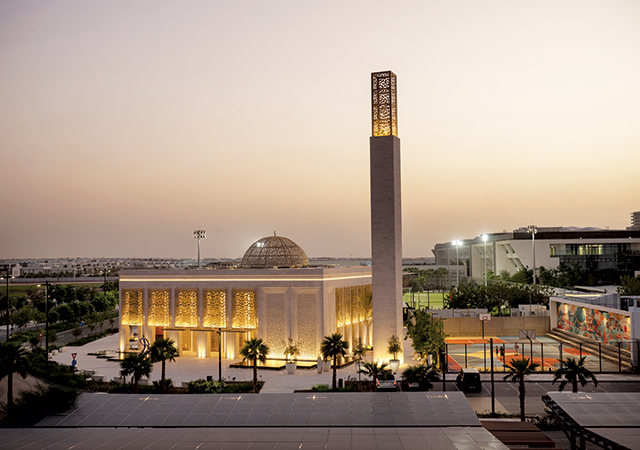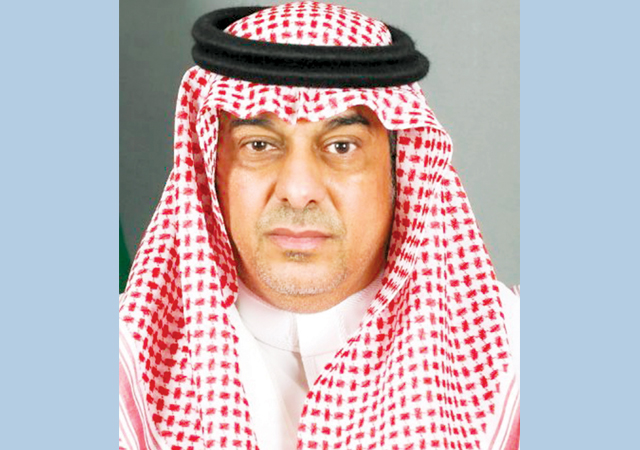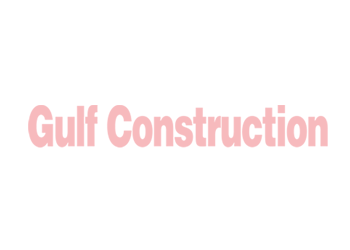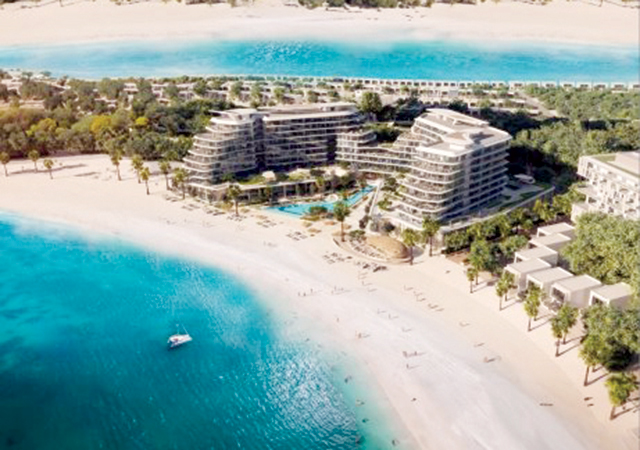
 Jeddah’s iconic waterfront, recently revamped with a 16,000-sq-m artistic painting on its pavement.
Jeddah’s iconic waterfront, recently revamped with a 16,000-sq-m artistic painting on its pavement.
A surge of optimism has swept through Jeddah’s construction industry following the recent award of a SR7.2-billion ($1.9 billion) contract to resume work on the iconic Jeddah Tower, which once completed to its full height of 1 km, will claim the title of the world’s tallest building.
The revival of this ambitious project has ignited hopes for the broader $20-billion Jeddah Economic City development, which has also been on hold for several years. As construction on the tower resumes, attention has turned to the potential revitalisation of this visionary project.
In another significant development earlier this year, the $20-billion Jeddah Central Development, a massive urban development project, awarded contracts worth a combined $3.2 billion for the construction of three of its four key components – a stadium, opera house and oceanarium – and infrastructure works.
Jeddah, a vibrant coastal city, is undergoing a significant transformation driven by ambitious construction projects. Apart from Jeddah Central, a number of cultural destinations are being developed as Saudi Arabia pushes ahead with its grand ambition to modernise and revitalise the historic Red Sea port city in a bid to position it as leading global economic and cultural powerhouse. These include the Historic Jeddah project, which saw the opening in June of teamLab Borderless Jeddah, a collaborative initiative between art collective teamLab and the Saudi Ministry of Culture. Like the Jeddah Central Development, Historic Jeddah project is being spearheaded by a subsidiary of Saudi Arabia’s sovereign wealth fund, the Public Investment Fund (PIF) and involves redevelopment of the city’s historic Al Balad district.
Another ambitious development is the Jeddah Airport City at King Abdulaziz International Airport (KAIA), the masterplan for which was created by the UK-headquartered Chapman Taylor, a global practice of architects and masterplanners.
 |
|
Jeddah Airport City ... masterplanned by Chapman Taylor. |
Jeddah also witnessed the revamp of its iconic waterfront with the inauguration of the Roshn Waterfront, which is adorned with an artistic painting on the pavement. The 16,000-sq-m attraction, which captures the vibrant spirit and culture of Jeddah, has set a new Guinness World Record for the longest painting on pavement. Another record holder is the Jeddah Food Cluster, a major project aimed at transforming the city into a global business hub with an investment target of $5.3 billion. Officially launched late last month, Jeddah Food Cluster is now recognised by Guinness World Records as the largest food park in the world by area, spanning 11 million sq m.
In addition, a landmark complex nearing completion is also eyeing this coveted recognition is Four Seasons Private Residences, a new architectural marvel that boasts the largest suspended bridges in the Middle East (see separate article above).
Meanwhile, as the initial phase of Riyadh Metro is flagged off in the Saudi capital, the construction sector awaits the revival of the Jeddah Metro project for the kingdom’s second largest city. The MRT network will consist of 81 stations and 197 trainsets serving a 161.1-km network that extends all the way from the Obhur Creek area in the north to beyond Al Balad in the south, and from King Abdulaziz Road in the west to Amir Majed Street to the east.
AIRPORTS & PORT
King Abdulaziz International Airport (KAIA) has ambitious plans to develop Jeddah Airport City in partnership with the private sector. The Airport City is expected to play a key role in establishing KAIA as a global economic, transit, logistics, tourism, and business hub. Spearheading Phase One of the development is SARH Development Company (SARH), entrusted with the task of designing Jeddah Airport City into a 24/7 destination at the intersection of KAIA and Jeddah’s evolving urban expanse. According to Chapman Taylor, construction began in 2023 and is expected to be completed by 2028. The initial phase, set to conclude in 2026, includes the parking podium and lifestyle centre, a shopping district, a city terminal, creative offices, a university for culinary arts and hospitality, co-working space, co-retail space, restaurants, entertainment, and a 20,000-seat arena.
Meanwhile, expansion and upgrade work is under way at King Abdulaziz International Airport, where a new aircraft fuel facility was inaugurated in October.
In May this year, Jedco, the operator of the airport, signed a series of agreements at the Future Aviation Forum to revamp facilities at the airport. These cover expansion and development of the cargo facilities, upgrade of the automated people mover (APM) system, installation of a new baggage handling system, development of a new inflight catering facility, enhancement of the oversized or overweight goods (OOG) system and transit baggage handling system (BHS) security system, development of a new inflight catering facility and recycling of waste and materials.
 |
|
Jawharat Jeddah, a key lifestyle destination taking shape in Jeddah (see online version for details). |
Alstom, a global leader in sustainable and green mobility solutions, has secured the contract to boost the capacity of the Innovia APM system at the airport.
Meanwhile, at Jeddah Islamic Port, EDECS, a key engineering and construction company, is working on a major infrastructure and road works contract from DP World for the development of the third stage of its Jeddah South Container Terminal.This project is aimed at increasing the port’s container handling capacity and supporting the kingdom’s maritime logistics and transportation strategy.
Dubai-headquartered DP World signed a 30-year build-operate-transfer (BOT) concession in late 2019 with the Saudi Ports Authority (Mawani) for the management and development of the port’s South Container Terminal.
EDECS said its scope of work includes infrastructure work on a total of 100,000 sq m. On completion, the revamped terminal will see the container handling capacity increase from 2.4 million to 3 million TEUs.
REAL ESTATE
Early this year, Roshn Group, a leading real estate developer owned by PIF, broke ground on its most ambitious mixed-use development, Marafy, in Jeddah. The 11.8-million-sq-m, human-centric, mixed-use project marries the developer’s signature ‘new way of living’ with an iconic urban canal – the first of its kind in Saudi Arabia. The 11-km-long Red Sea-fed canal will add an exciting new dimension to Roshn’s lifestyle, prioritisation of walkability, cyclability. On completion, Marafy will accommodate over 130,000 residents.
Roshn had last year awarded a contract worth SR690 million ($188 million) to Saudi group PC Marine Services for the canal and bridge construction within the Marafy community (see Page 18).
 |
The oceanarium ... a major component of Jeddah Central Development. |
PIF unit Al Balad Development Company (BDC) is currently engaged in revitalising the Jeddah’s historic district in line with the plan to transform it into a heritage and tourism destination. The project, which covers an area of about 2.5 sq km, involves a total built-up area of 3.7 million sq m featuring 9,300 residences, 1,800 hotel rooms and about 1.3 million sq m of commercial space.
Among other real estate developments, Darco Real Estate Company has launched a SR485-million project in the Al Shati district of Jeddah in collaboration with Sedco Capital, a closed joint-stock company fully owned by Sedco Holding Group and Sahem Financial Platform, a Saudi group operating in the financial technology sector. Spanning a 20,000-sq-m area, the Jeddah waterfront development features 28 buildings with more than 500 residential units as well as recreational and sports facilities in addition to 600 parking lots.
Residential real estate demand in Jeddah is expected to stay robust due to population growth, particularly from expat inflows, according to a new report from S&P Global. In Jeddah, some 11,300 residential were handed over in the first half of this year, taking the total number of units to 891,000, the report said.
In the retail sector, one of largest shopping malls under construction is the Jawharat Jeddah, which is expected to be a key lifestyle destination in Jeddah for footfall and spend. Work on the project is on track to complete by the end of 2025. On opening, it is expected to feature 300 stores including 50 flagship stores, and 10 new brands in the city. Jawharat Jeddah will also boast the city’s first world-class luxury wing with over 60 brands along with next-generation entertainment, a pioneering events hub, three distinct experiential food and beverage zones and a state-of-the-art immersive digital experience.
Jeddah is also developing its industrial and warehousing space in line with its potential as a logistics hub. Spearheading this ambition is the Saudi Authority for Industrial Cities and Technology Zones (Modon), which this year has completed several new development projects, including the construction of 20 factories, each spanning 450 sq m, and 12 production sites, each covering 900 sq m, in the Modon Oasis of Jeddah. Additionally, 24 facilities, each covering 225 sq m, were built in the First Industrial City in Jeddah.
Modon also spearheaded the development of the newly-opened mega Jeddah Food Cluster, which houses 124 operational factories with investments totalling SR4.4 billion. It also features 76 ready-to-use factories that comply with Saudi Food and Drug Authority standards. Additionally, the cluster has built a central laboratory to improve food quality and safety, as well as over 134,000 sq m of shared cold and dry storage facilities.
Last month, Modon signed private sector partnership with Oman’s Osara Corp to construct an industrial park spanning over 45,000 sq m in Jeddah’s Second Industrial City. The deal involves the development of a total of 52 ready-built factories.




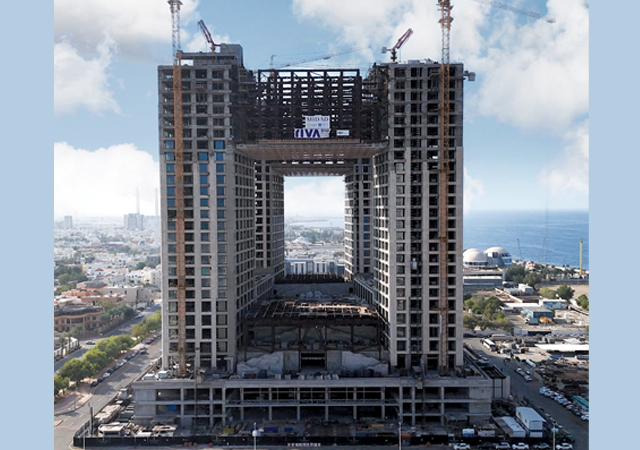



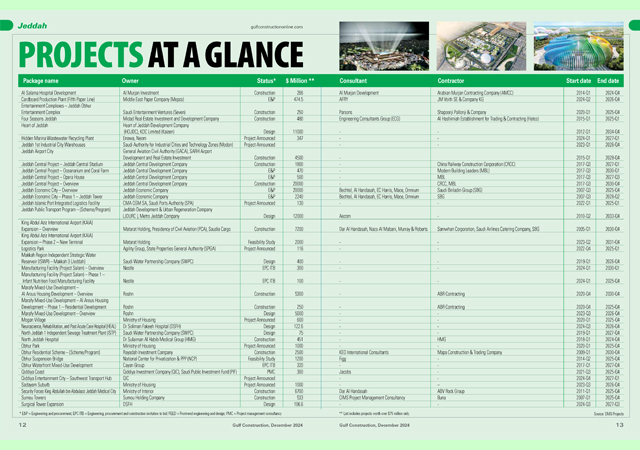





.jpg)
